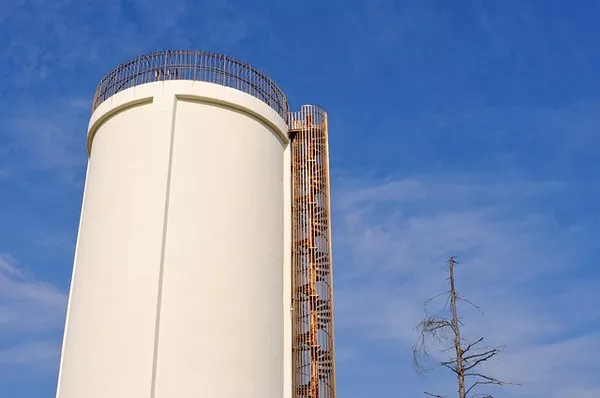Sewage treatment plays a crucial role in maintaining public health, preserving the environment, and ensuring sustainable water resources. In a rapidly growing nation like India, managing wastewater is a pressing concern. With a vast population and increasing urbanization, the need for effective sewage treatment plants (STPs) has become more critical than ever before. This article aims to provide a comprehensive overview of the current state of sewage treatment in India, examining the number and distribution of STPs across the country.
The State of Sewage Treatment in India
India faces numerous challenges in wastewater management due to factors such as rapid urbanization, insufficient infrastructure, and population growth. Historically, sewage treatment facilities in India have not kept pace with the increasing volume of generated wastewater, leading to severe pollution of rivers, lakes, and groundwater sources.
Number of Sewage Treatment Plants in India
The number of sewage treatment plants in India has witnessed gradual growth in response to the mounting environmental concerns. the Central Pollution Control Board (CPCB) reported approximately 1,600 STPs across the country. However, this figure may have evolved since then, considering the government’s continuous efforts to improve wastewater management infrastructure.
Geographical Distribution of Sewage Treatment Plants
The distribution of STPs across India is uneven, with a higher concentration in urban areas compared to rural regions. Metropolises, large cities, and industrial hubs have a more developed sewage treatment infrastructure, mainly due to their higher population density and greater wastewater generation.
In contrast, rural areas and smaller towns often lack adequate sewage treatment facilities, leading to the direct discharge of untreated sewage into nearby water bodies. This not only poses a significant environmental risk but also jeopardizes the health and well-being of communities reliant on these water sources.
Major Cities Leading in Sewage Treatment
Several major Indian cities have made commendable strides in sewage treatment to address the challenges posed by urbanization and population growth. For instance:
1. Delhi:
The capital city has been actively improving its wastewater management infrastructure by increasing the number of STPs and investing in modern technology. The Delhi Jal Board has been working diligently to treat wastewater before discharging it into the Yamuna River.
2. Mumbai:
As one of India’s most populous and industrialized cities, Mumbai has been prioritizing sewage treatment. The Mumbai Sewage Disposal Project has contributed significantly to treating wastewater before releasing it into the Arabian Sea.
3. Chennai:
Chennai has been focusing on increasing its sewage treatment capacity to safeguard the coastal environment and water quality. The Chennai Metropolitan Water Supply and Sewerage Board has undertaken various initiatives to augment the city’s STPs.
4. Bengaluru:
The Silicon Valley of India has been grappling with severe water pollution issues. To address this, the Bangalore Water Supply and Sewerage Board has implemented measures to enhance sewage treatment and mitigate environmental impacts.
Government Initiatives and Policies
Recognizing the urgent need to bolster wastewater management, the Indian government has introduced several initiatives and policies to promote the development of STPs:
Atal Mission for Rejuvenation and Urban Transformation (AMRUT): Launched in 2015, AMRUT focuses on improving urban infrastructure, including sewage treatment facilities, in 500 select cities across India.
National Mission for Clean Ganga (Namami Gange): Launched in 2014, this mission aims to rejuvenate the Ganga River and its tributaries. It includes the establishment of new STPs and the upgradation of existing ones along the river’s course.
Smart Cities Mission: Launched in 2015, this mission targets the development of 100 smart cities in India, emphasizing sustainable urban infrastructure, including sewage treatment systems.
Swachh Bharat Abhiyan: Launched in 2014, this flagship program aims to achieve a clean and open-defecation-free India. It addresses the need for improved sanitation facilities, including sewage treatment.
Challenges and the Road Ahead
Despite the progress made, India faces several challenges in sewage treatment:
Inadequate Infrastructure: The existing STPs often lack capacity and efficiency to handle the increasing volume of wastewater generated daily.
Funding and Financing: Building and maintaining sewage treatment infrastructure require substantial financial resources, and securing adequate funding remains a challenge.
Policy Implementation: While the government has introduced various initiatives, effective implementation and monitoring at the ground level remain critical for success.
Public Awareness: Raising awareness about the importance of proper sewage treatment and encouraging responsible water usage is essential for the success of any wastewater management plan.
Conclusion
Sewage treatment in India is a complex issue that demands immediate attention and comprehensive action. The current number of approximately 1,600 STPs is just a stepping stone in the nation’s journey toward sustainable wastewater management. By continuing to invest in sewage treatment infrastructure, implementing policies effectively, and raising public awareness, India can significantly improve its sewage treatment capabilities and safeguard its invaluable water resources for future generations. It is only through collaborative efforts that India can achieve its vision of clean and sustainable water bodies across the country.

